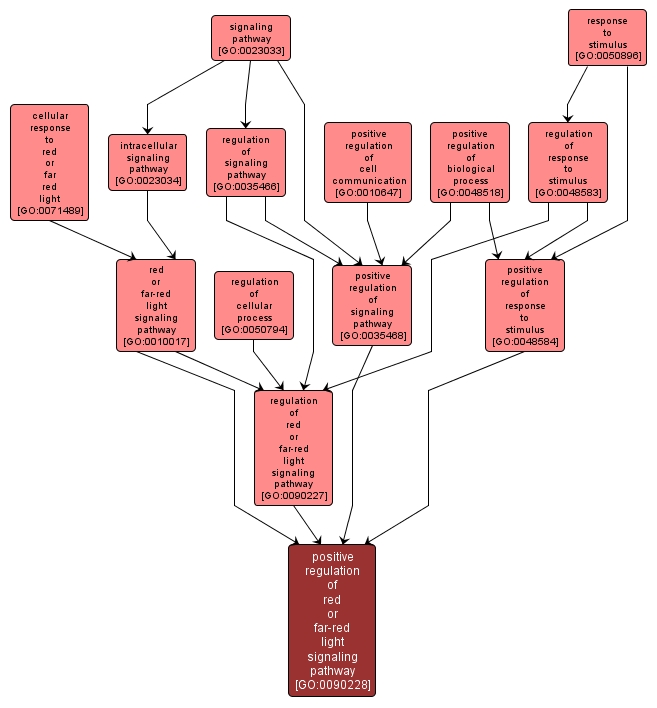GO TERM SUMMARY
|
| Name: |
positive regulation of red or far-red light signaling pathway |
| Acc: |
GO:0090228 |
| Aspect: |
Biological Process |
| Desc: |
Any process that increases the rate, frequency or extent of the red or far-red signaling pathway, the series of molecular signals initiated upon sensing by photoreceptor molecules of red light or far red light. |
Synonyms:
- positive regulation of phytochrome signaling pathway
|
|

|
INTERACTIVE GO GRAPH
|














